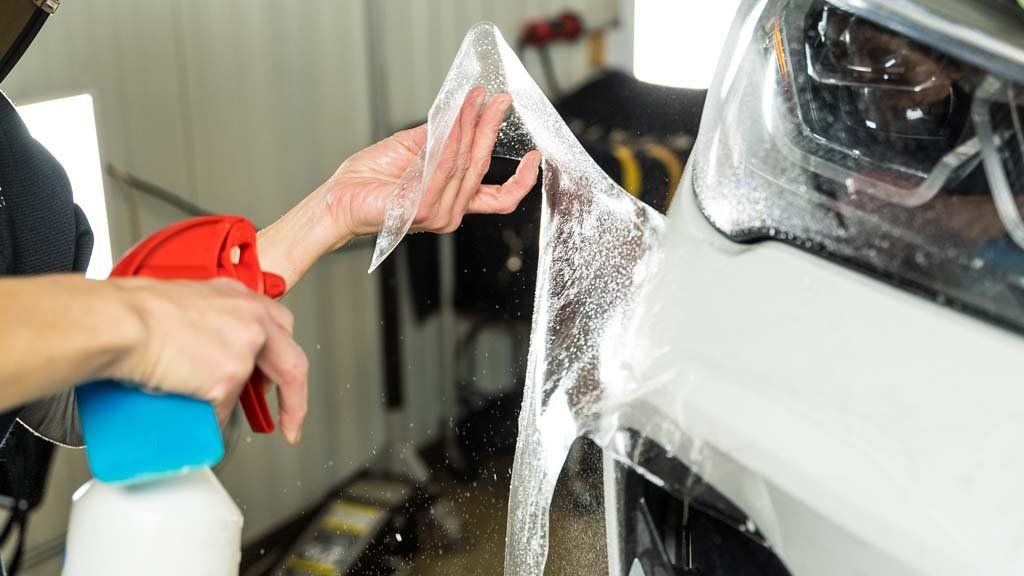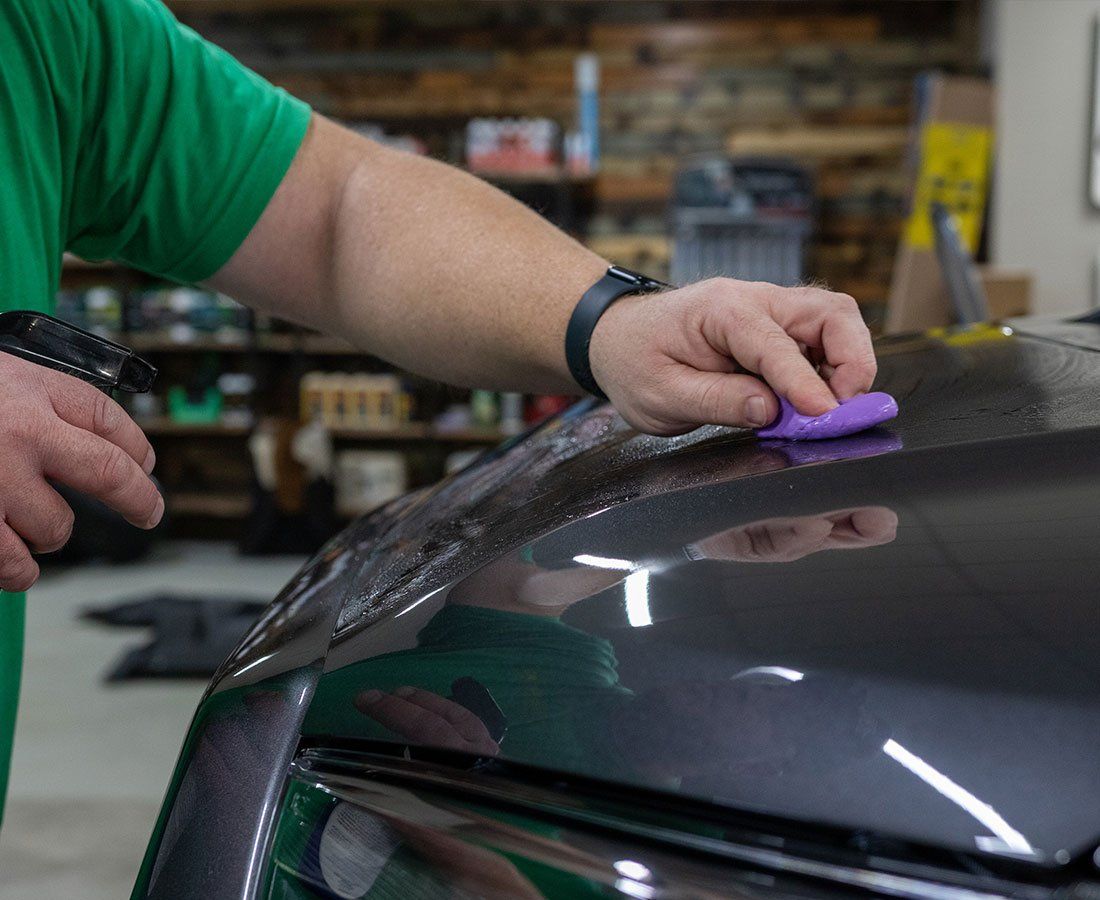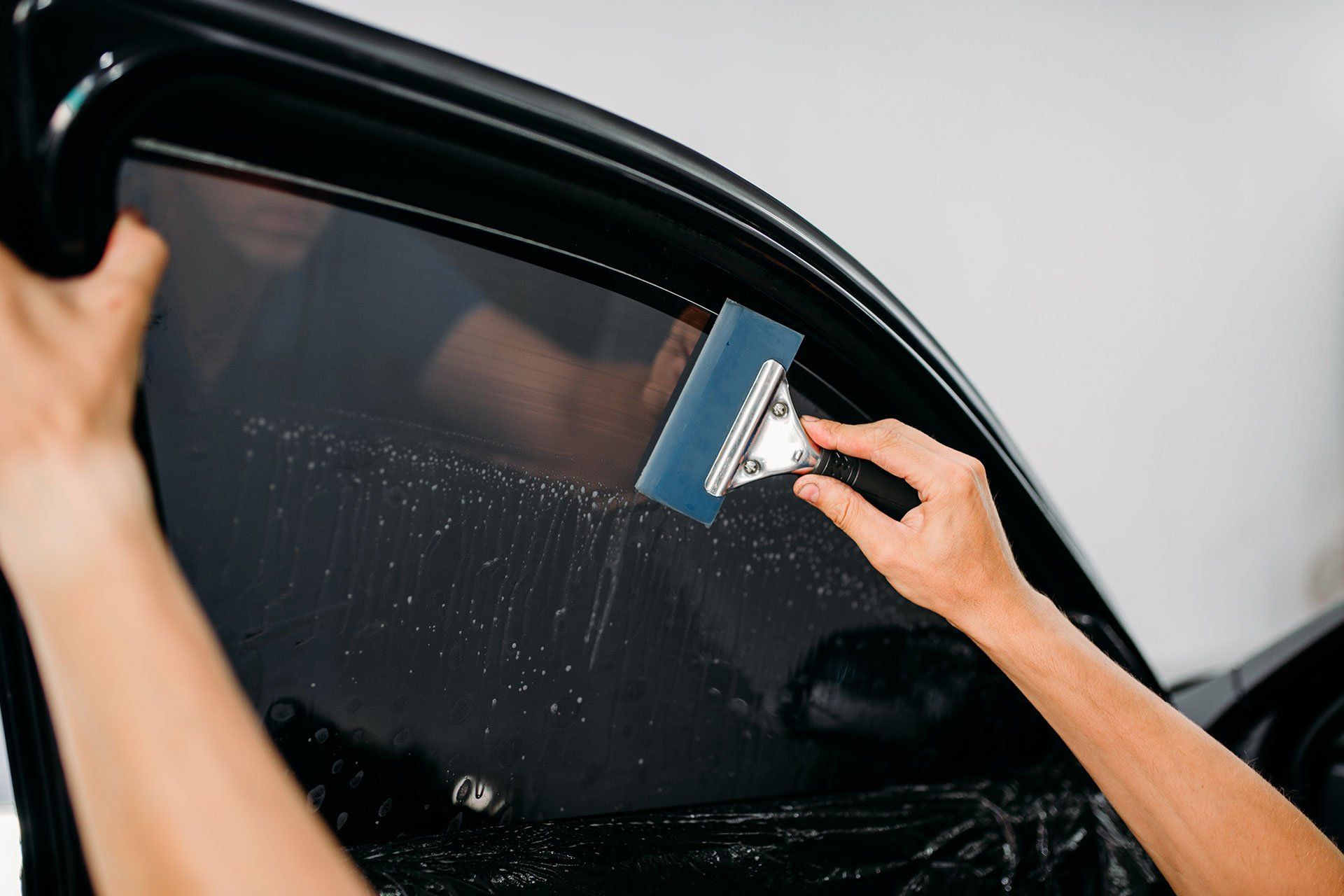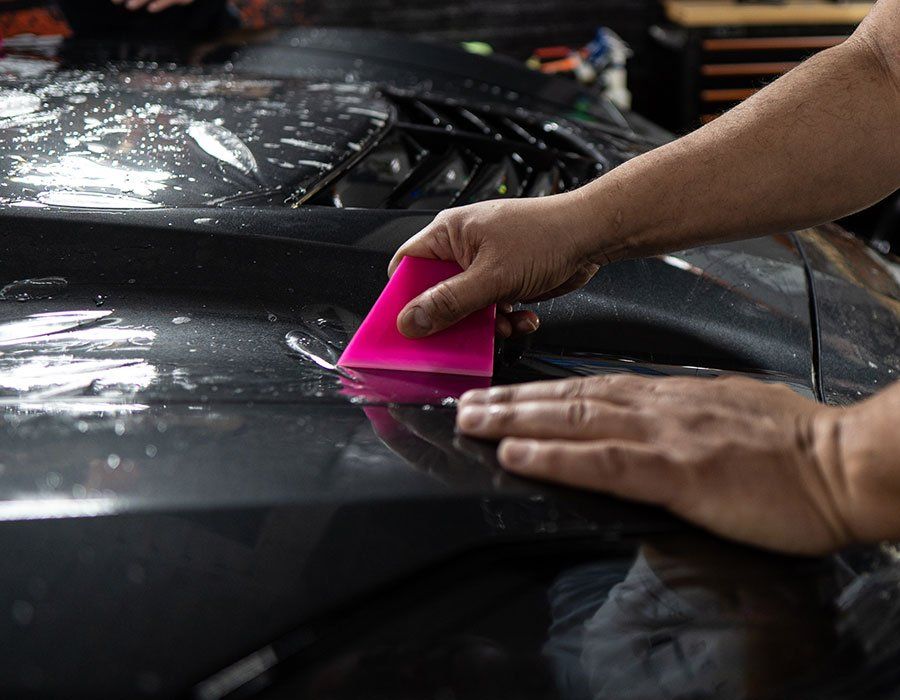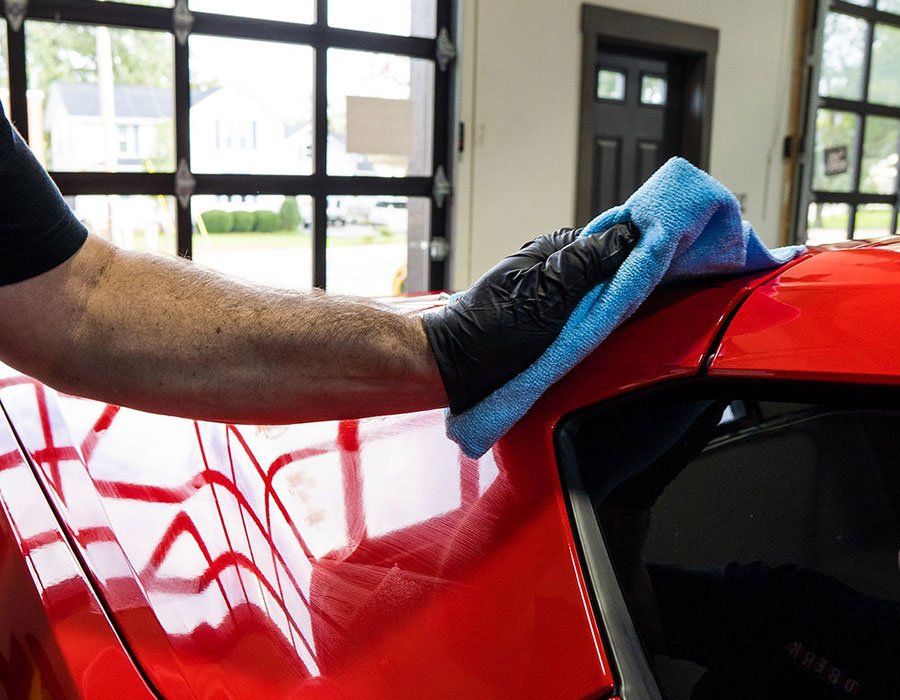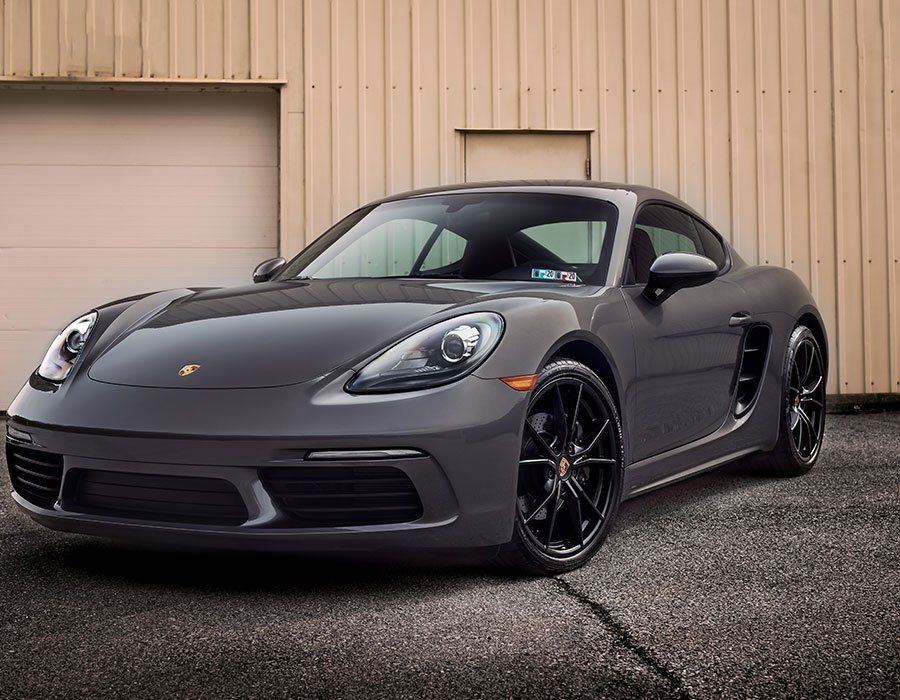Should You DIY Your Window Tinting Installation? Pros and Cons Explained
CALL (727) 940-2340
SCHEDULE NOWWindow tinting is a popular automotive modification that offers a multitude of benefits, from enhanced privacy and reduced glare to improved interior temperature control. As a car owner, you might be tempted to take on the task of window tinting installation yourself, considering the abundance of DIY kits available. However, before diving into this DIY project, it's crucial to weigh the pros and cons to make an informed decision. In this blog, we delve into the world of DIY window tinting, exploring the advantages and drawbacks of tackling the installation yourself. From cost savings and customization options to potential pitfalls and the importance of professional expertise, we provide a comprehensive guide to help you determine whether DIY window tinting is the right choice for you. Prepare to uncover the pros and cons, and make an educated decision on how to achieve the perfect window tint for your vehicle.
While DIY window tinting can save money, it requires thorough research and preparation to ensure compliance with state and municipal laws. Proper installation also requires a clean work area and attention to detail to avoid debris getting trapped between the glass and film. Additionally, DIY installation may not be as durable or protective as high-grade treatment from professionals. Hiring a professional for your window tinting guarantees a reliable service and a smooth result on the first try, which is advantageous compared to DIY installation, where mistakes could lead to wastage of materials and time. Ultimately, the decision depends on your level of skill, budget, and willingness to take on the risks associated with DIY window tinting installation.
DIY vs. Professional Window Tinting: Weighing Your Options
Looking for a way to make your car more stylish and reduce glare on your windshield? Perhaps you've considered tinting the windows yourself. While this might seem like a cost-effective solution, it is not always the best option to achieve a high-quality result. Before making a decision, it's essential to weigh the benefits of DIY window tinting against the advantages of professional tinting services. At first glance, it's easy to think that installing window tints is simple enough and that doing it yourself will save you a considerable amount of money. However, there are several other factors to consider.
Let's start by examining the benefits of professional window tinting versus doing it yourself. First and foremost, professional installation guarantees that your film will be applied correctly, reducing the risk of peeling or bubbling over time. Professional companies also have access to high-quality materials that are more durable and longer-lasting than those available to consumers in retail stores.
Another benefit of professional installation comes from their knowledge and experience with local regulations. Understanding local laws regarding tints is crucial to avoid legal issues; furthermore, professionals know which shades are allowed by law in different states and municipalities. They can advise customers on the best shade to choose depending on their specific needs.
However, hiring professionals comes at a higher cost than doing it yourself. The simplicity and affordability of DIY kits might initially seem like an attractive proposition. But before jumping into the project with both feet, it's essential to consider all aspects.
One downside of opting for DIY installation is the risk of mistakes. It may involve a steep learning curve, and it's easy to end up with a subpar job. Additionally, it is time-consuming and requires a clean work area to prevent dust particles or debris from getting caught between the film and glass.
On the other hand, DIY installation also has its advantages. You can choose from an extensive range of DIY kits on the market, allowing you to save money on the materials and tools needed for the project. Additionally, if you are someone who enjoys do-it-yourself projects and likes taking control over your vehicle treatments, then DIY tinting is likely an attractive option.
While professional window tinting may be more expensive initially, it could save you money over time by reducing interior fading or providing insulation against heat and UV rays. On the other hand, DIY offers more control for those who enjoy personalizing projects.
Pros and Cons of DIY Tinting
When considering tinting your car's windows, many factors affect whether you should purchase a professional installation or go the DIY route to meet your needs best. Here are some pros and cons of doing it yourself that can help you make an informed decision.
One excellent reason why people opt for DIY tinting is cost-effectiveness. Purchasing a professional installation can run upwards of $300 or more per car window set. With self-installation, it provides you with significant savings, depending on what brand and shade you choose. Another notable benefit of installing films yourself is convenience. Instead of booking appointments or waiting for professionals to have availability in their schedule, you can get started immediately once your kit arrives at your doorstep.
However, installing tints on your windows yourself has some potential downsides. Inexperienced individuals could experience frustration with the process, as DIY kits tend not to be of the highest quality and may warp or bubble after being installed. The installation process itself also becomes quite time-consuming, requiring research on state laws and regulations about permissible shades for car windows as well as taking measurements of individual windows to custom cut the film before application.
Beyond that, dust and debris can present pitfalls in curation with DIY installations—any mistakes can result in a wasted kit that must then be resolved with more money spent at your local professional. While there are unquestionably pros and cons to both DIY and professional installation of window tints, understanding what you would like your car's appearance to look like in addition to handling any applicable laws will likely determine which option is right for you.
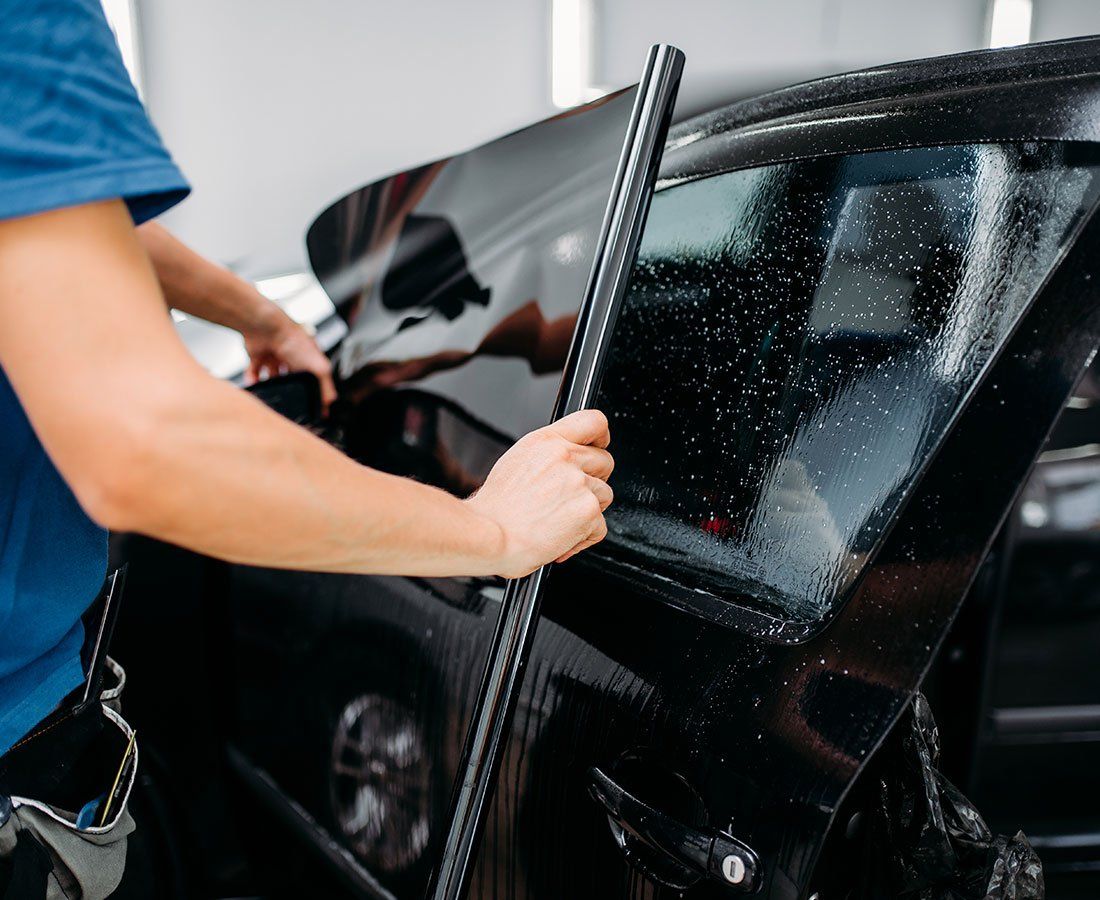
Execution of Quality DIY Window Tinting
DIY is often seen as a cost-effective and practical solution for many common tasks, including window tinting. However, when it comes to the execution of quality DIY window tinting, there are important factors to consider.
First and foremost, before diving into the process of applying the window tint, it's crucial to clean the surface properly. Any dirt, debris, or residue can get trapped between the glass and the film and compromise the tinting results. The surface must also be dried thoroughly. Additionally, ensuring that all air bubbles are eliminated from under the film is essential. These bubbles may not only affect the appearance but also reduce the tint’s protective function.
While it may seem like an easy task to apply window tinting adhesive to your car windows using a steady hand, even slight movement or an error in measuring could result in uneven application. This could leave portions of your window exposed to UV rays or hinder your ability to see completely through them while driving. Even getting in and out of the car during the application process could result in accidental scratches on the film. These scratches could cause irreparable damage to your newly applied window tint.
Professional installers are trained to execute precise measurements and apply high-quality materials without missing any details in the process. Even better, professional installers are trained to perform proper removal if anything goes wrong during installation or if any imperfections develop over time. Tint installations come with warranties against errors such as quality issues or peeling over time.
One might argue that professional installation is more expensive, but the truth is that you pay for high-quality materials, unparalleled precision, and proper removal if needed. Low-quality DIY tints come with the risk of not lasting as long due to improper installation. Are you willing to take the risk of it peeling over time when a little bit of extra investment in professional installation could have prevented such an occurrence?
Essential Tools and Materials for Tinting
Now that we've discussed the benefits and downsides of each option, let's explore what it might look like if you choose DIY tinting. Developing a clear-cut understanding of how to execute successful self-installation requires thorough preparation beforehand. One aspect of this includes making sure that you source high-quality films online rather than using kits from local big-box stores.
Secondly, specific tools make self-installation significantly more manageable: exacto knives or razor blades for trimmings or specific cuts, for instance. Also, starting in a clean environment with no dust particles nearby is crucial; a garage or indoor space is ideal for limiting dust from an outdoor environment infiltrating the adhesive side before applying it—the cleaner and dust-free your workspace is during application, the better finish you'll achieve.
Thirdly, measuring correctly before cutting the tints into shapes relevant to your vehicle is budget-saving. This method ensures you have enough material to cover all windows (including making allowances for any mistakes or miscalculations)—measuring window dimensions and then adding a few extra inches on all sides before cutting your film gives you enough wiggle room and prevents waste.
All of these tasks require precision and attention to detail. Once the physical preparation is complete, you must adhere thoroughly to each step of the comprehensive installation guide that comes with your kit of choice. Having patience while working through the finer details will help you apply the perfect finish to your car windows.
Cost Analysis: DIY Tinting vs. Professional Services
When it comes to window tints, there are several types available on the market. Each type offers different benefits and drawbacks, and it's essential to explore them before making a decision. Here are some of the most common types of window tints to consider:
Ceramic film is one of the latest technologies in window tinting. It is known for its superior heat-blocking abilities and UV protection, which reduce fading on the car interior. Ceramic films also offer excellent clarity, making it easy to see out of the windows with minimal distortion. However, ceramic films can be expensive compared to other options.
Carbon films are known for their non-reflective properties, which give cars a sleek and subtle look. They are designed to provide superior heat blockage and UV protection while also preventing the fading of the car's interior. Carbon films are much more affordable than ceramic films, making them a popular choice for many car owners.
Dyed window tints use a process similar to dying clothes but with an added layer between the adhesive and dye layer for increased durability. This type of tinting does not reflect light well nor block sun rays efficiently; therefore, it may not keep your vehicle as cool as other options, depending on how dark you go. Dyed window tints come at a lower price point than ceramic or carbon.
Metallic films contain tiny metallic particles that block sunlight before entering through your car windows. These particles give them their shiny appearance but can cause radio interference or cell phone connectivity issues (if you care about this thing). On the plus side, metalized tinting is very effective for high-heat-producing climate areas like Arizona or Texas, making it one of the most durable and cost-effective options on the market.
It's essential to consider which type of tinting material works best for your car, depending on your specific needs. Some darker films could make it difficult to see out of the car windows in already impaired conditions, such as at night or in heavy rain. On the other hand, some clear films offer less visible results but with enough heat and UV penetration blockage.
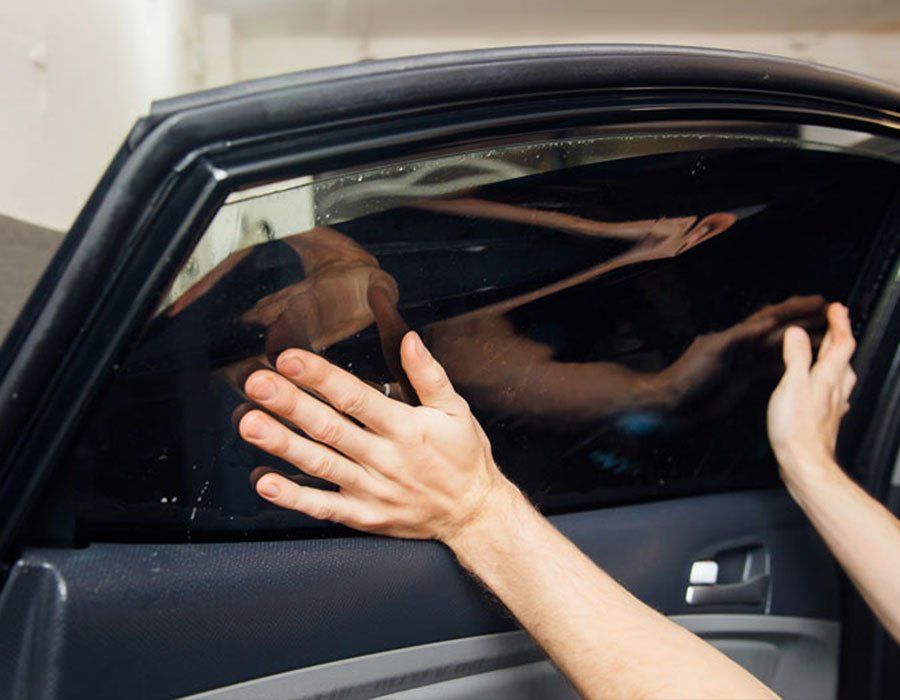
Responses to Frequently Asked Questions
What are the potential risks associated with attempting a DIY window tint installation?
Attempting a DIY window tint installation may come with several risks. Firstly, incorrect installation can cause bubbles and creases within the tinting film, which can lead to it peeling off over time. This can be frustrating and result in additional expenses for repairs or a complete reinstallation. Additionally, inexperienced individuals may not have the necessary tools or knowledge to work with the tinting film, leading to injury or damage. The window tinting process also involves working with sharp blades and chemicals, which can be hazardous if not handled properly.
Finally, should you perform the installation incorrectly, it might also render your car uninsurable, as insurers take into consideration factors such as road safety when assessing policy premiums. All things considered, while it may seem cost-saving initially, the risks associated with DIY window tinting installations pose significant consequences for both your safety and wallet.
How much money can be saved by performing a DIY window tint installation versus hiring a professional?
As tempting as it may be to save some cash by tackling a window tinting project on your own, the truth is that the potential cost savings from a DIY job are often outweighed by the risks and potential mistakes.
For starters, the cost of materials alone can add up quickly. High-quality tinting film can run anywhere from $50 to $100 or more per roll, and you may need multiple rolls depending on how many windows you're looking to cover. Add in tools like a heat gun, squeegee, and razor blades, and it's easy to see how costs can quickly creep into the hundreds of dollars range.
But even if you have all the right tools and supplies at your disposal, there's still a risk that you'll make mistakes during installation that could cost you more in the long run. A poorly installed tint might bubble or crack over time, leading to costly repairs or a full replacement down the road.
On the other hand, hiring a professional window tinting company can provide peace of mind and quality results. They have access to high-quality materials and equipment, plus years of experience installing tints on all kinds of vehicles and properties. Plus, many offer warranties or guarantees that can give you further protection against issues arising from installation mistakes. So while it's understandable to want to save some money by doing things yourself when possible, when it comes to window tinting, often the best bet is to leave it to the pros.
What level of difficulty is involved in performing a DIY window tint installation?
When it comes to DIY window tinting installation, the level of difficulty involved can vary depending on your experience and expertise in handling adhesive materials. According to a recent survey conducted by a leading window tinting supply company, over 60% of DIY installers reported experiencing difficulties with air bubbles, creases, and uneven cuts during the installation process.
It's essential to understand that window tinting requires precise measurements, careful handling of adhesive films, and appropriate tools. If you lack experience or have shaky hands, it's best to leave this job to a professional. You don't want to end up ruining your expensive car windows or home windows due to poor installation skills.
Moreover, installing window tints on your own may lead to subpar outcomes that won't last long when compared to expert installations' quality. Professionals have the proper equipment and training to ensure that your tint job is flawless and long-lasting. In conclusion, while DIY window tint installation may seem like an easy way out, the reality is quite different. The process is labor-intensive and requires precision, patience, and adequate knowledge. We recommend seeking professional services for optimal results that meet quality standards, but if you feel confident enough in your abilities, do some research beforehand to avoid disappointment.
What are the advantages and disadvantages of using a professional window tint installer versus doing it myself?
As a window tinting enthusiast, you may be wondering whether you should take on the challenge of installing your own window tint or hire a professional installer to do it for you. Both options have their advantages and disadvantages, so let's delve into each one.
Advantages of Hiring a Professional Window Tint Installer:
1. Expertise: A skilled and experienced professional installer will know how to properly apply the tint without making any mistakes.
2. Time-saving: Since they are experienced, the installation process will be faster than when you decide to work on it by yourself.
3. High-quality products: Professional installers use only top-quality products that offer superior heat-reduction and UV-blocking capabilities, ensuring longer-lasting results.
Disadvantages of Hiring a Professional Window Tint Installer:
1. Cost: Professional installation can come at a high cost compared to DIY projects.
2. Limited availability: Finding a proven and reliable professional installer is beyond just tapping on the first company that pops up online; it may take some time.
3. Inconvenience: Being able to bring your car to the shop for the installation (or having someone come to you) can be an inconvenience in itself.
Advantages of DIY Window Tint Installation:
1. Cost-saving: It will save you hundreds of dollars by cutting out labor costs.
2. Control over quality: You'll have total control over the outcome and how much attention is paid to every detail.
3. Convenience: You don't have to rely on anyone's schedule or availability.
Disadvantages of DIY Window Tint Installation:
1. Lack of Experience: Without proper experience, window tint installation can easily go wrong, leading to bubbles and creases within the film as well as inconsistencies in application.
2. Low-Quality Results: Even if done correctly, DIY window tint may not provide the same performance benefits as those installed professionally.
3. Frustration/time: Installing window tints is a tedious process that can be time-consuming and lead to frustration.
In conclusion, it all boils down to the result you want, the quality of work you desire, and your personal level of skill and experience. As a rule of thumb, while you may save money by DIYing window tints, the risk of making mistakes is high, which can ultimately lead to dissatisfaction with the results. On the other hand, hiring a professional installer guarantees an impressive end product with little to no room for error.
Trusted Window Tinting Service in Tarpon Springs, FL
Elevate your driving experience with Auto Film Guys, the trusted window tinting service provider in Tarpon Springs, FL. Our team of skilled professionals is committed to delivering superior results, providing you with the perfect balance of style, privacy, and comfort. With our premium window tint films and precise installation techniques, we ensure maximum UV protection, reduced glare, and improved interior temperature control. Don't settle for ordinary window tinting; trust Auto Film Guys for exceptional craftsmanship and outstanding customer service. Schedule your appointment today and discover why we are the go-to choice for window tinting in Tarpon Springs. Your satisfaction is our top priority, and we guarantee results that will exceed your expectations. Drive with confidence and style. Choose Auto Film Guys for all your window tinting needs.
The Auto Film Guys Blog
